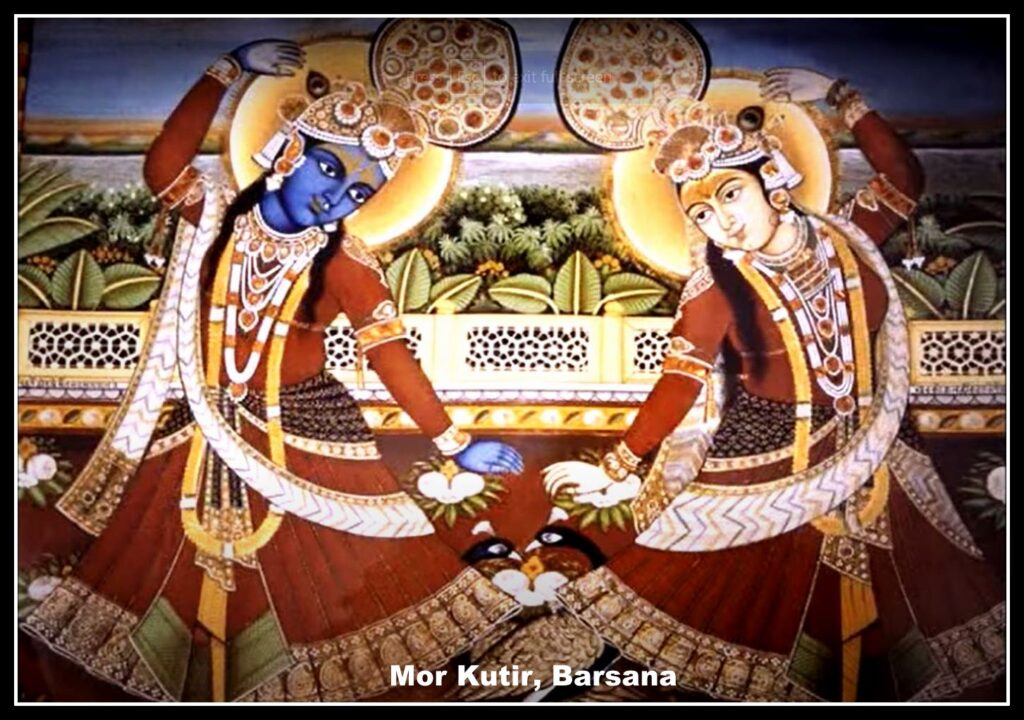
Nand Bhavan was the abode of Nanda Maharaja (Krishna’s father) in Nandgaon. Nandgaon is situated about 50 Kilometers from Mathura and takes about an hour to reach. Nand Bhavan is the most famous pilgrimage destination of Nandgaon and is visited by thousands of people each year. While residing in Gokul, demons like Putana, Trinavarta, and Satakasura tried to harm Krishna. Hence Nanda Maharaja and the cowherd community decided to shift elsewhere. After leaving Gokul Mahavan, Nanda maharaja and his cowherd community initially moved to the Chhatikara village. They subsequently moved to Kamyavan (Kaman), and other places before settling down at Nandgaon. Nanda Maharaja had built his palace on top of the Nandisvara hill, to protect little Krishna from the demons sent by Kansa. Nandisvara hill (meaning the Lord of Nandi) is believed to be a manifestation of Lord Shiva. Long ago, Shiva had performed severe penances desiring to witness the childhood pastimes of Krishna. Being pleased, Lord Krishna instructed him to manifest himself as a hill at Nandgaon. Accordingly, Shiva manifested himself as the Nandisvara hill and Lord Krishna performed His sweet pastimes upon this hill to fulfill the desires of His dear devotee. Krishna was six years and eight months old when He came to Nandgaon and lived here till he was ten years and seven months old, after which He left for Mathura.










